


Beautiful coastlines, crystal-clear seas, impressive ancient Nuraghic remains, and a Roman trading port.
Related pages:
Alghero & North West
Oristano
Cagliari
Su Nuraxi, Nora, Montessu
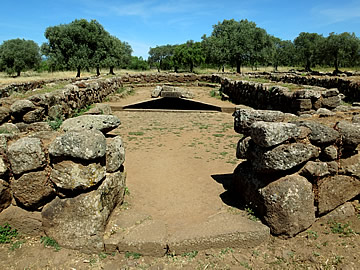
North of Oristano there is a small Nuraghic complex at Santa Cristina but the main draw is the underground well and shrine. Dating from the 13th century B.C. it is in a state of near-perfect preservation surrounded by olive trees.
The well is enclosed by a keyhole-shaped wall open at the base, the whole surrounded by another wall with a single entrance .
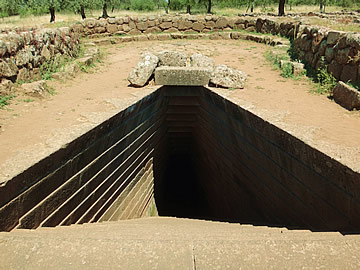
Directly through the entrance would have been an area for votive offerings. On the opposite side the impressive staircase leads down to the well and tholos.
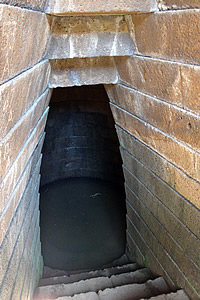
The tholos is also typical of many towers in the Nuraghic settlements and is a domed room, the dome being a false cupola formed from concentric circles of stone, one on top of another and overlapping inwards so that they form progressively smaller circles. In the well room the tholos was not completed in order to leave an open shaft to the sky via a central 35cm diameter opening 7m below the surface.
At equinox in March and September sunlight streams down the stairwell to illuminate the well.
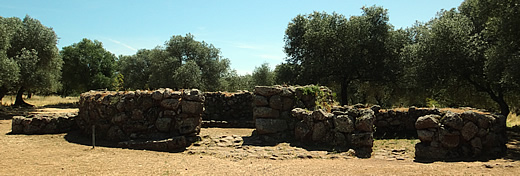
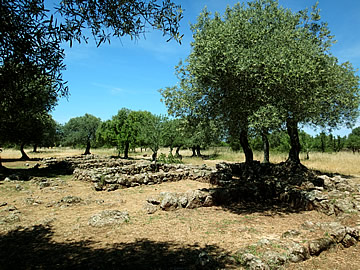
Around the sacred well building are the remains of a 10m diameter circular meeting room, complete with stone benches lining the wall, and sleeping quarters for pilgrims.
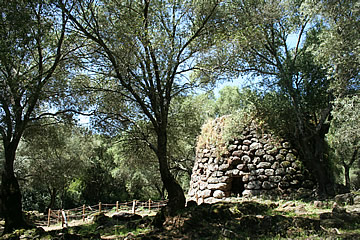
A short walk away the Nuraghe of Santa Cristina is a single tower of about 13 metres in diameter. Nearby lie the remains of a Bronze Age village with buildings from various later periods. All are in a woodland setting, very welcome shade on a hot day.
The highly rated restaurant here was closed (Monday) so we had to settle for a pork sandwich at a motorway station which wasn't bad.
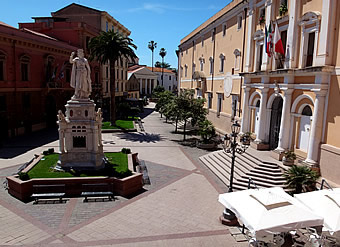
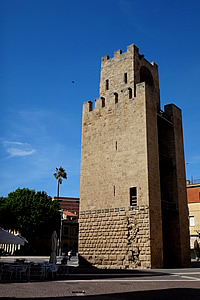
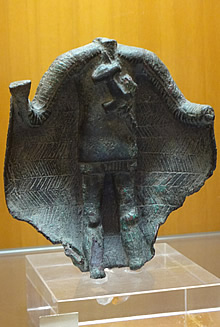
Though human occupation at Oristano can be dated back to 6000 B.C. the first record of it as an urban centre is in the 8th century A.D. when the first Arab invasions took place.
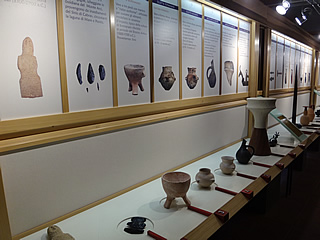
Oristano began to thrive in the fourteenth century under the so-called Judices, or Kings, of Arborea and in 1479 it was declared a royal city. 150 years later it was sacked by the French.
It's an easy city to explore without there being a great deal to see. We popped into the historical museum which has some very nice items, some thousands of years old, and a really impressive tactile gallery for the blind and visually impaired.
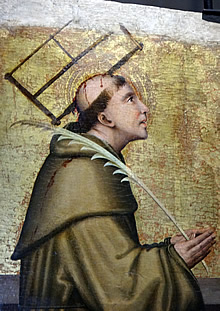
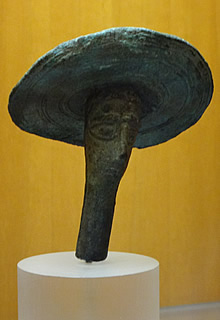
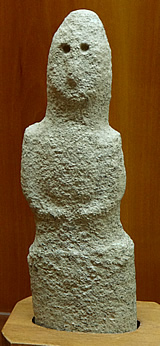
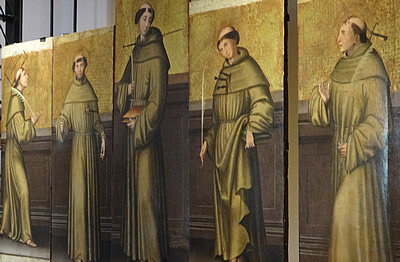
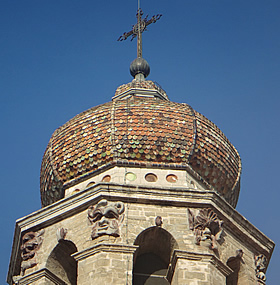
The sombrero-style hat on one 8th century B.C. bronze is surprising and lovely.
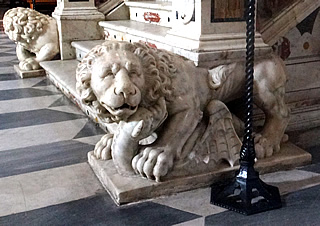
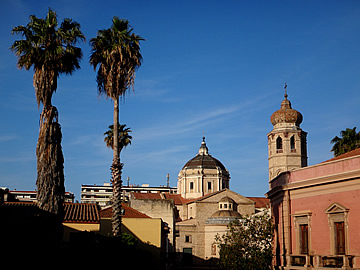
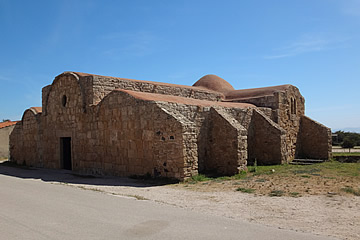
Just before the entrance to the trading port of Tharros lies a fifth century church, San Giovanni di Sinis, possibly Sardinia's oldest.
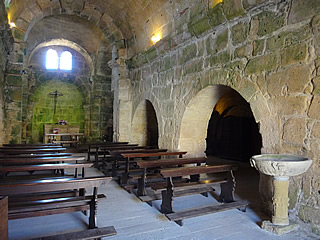
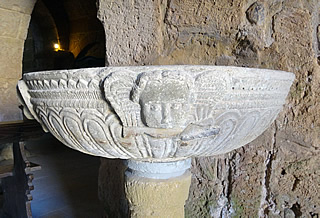
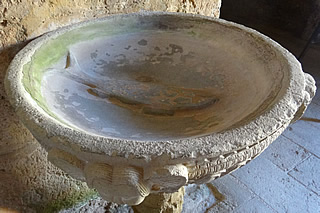
The exterior looks vaguely Byzantine; the interior dates from the 9th-11th centuries and is a very simple Romanesque style.
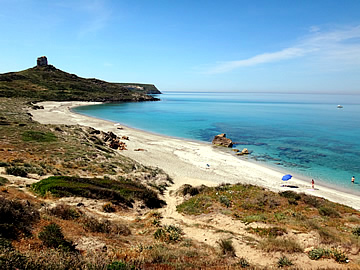
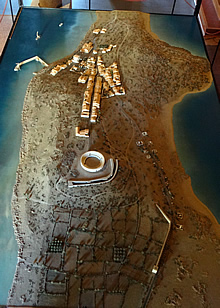
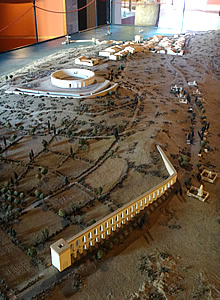
Tharros is well-placed on the Sinis peninsula and flourished as a trading port from 800 B.C. under Phoenicians, Carthaginians and Romans before declining after coming under Moorish attack.
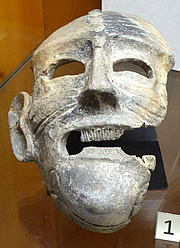
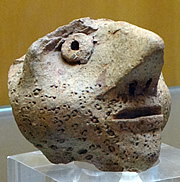
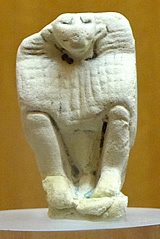
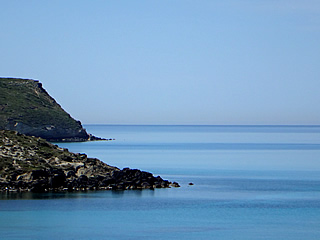
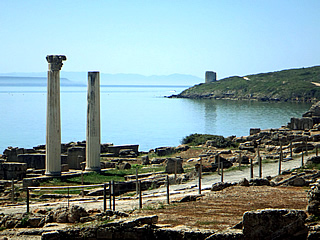
The diversity of objects found at Tharros testify to the extent of its trade around the shores of the Mediterranean.
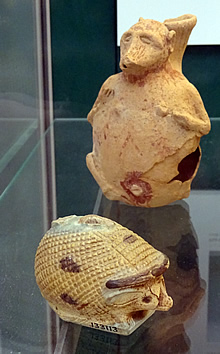
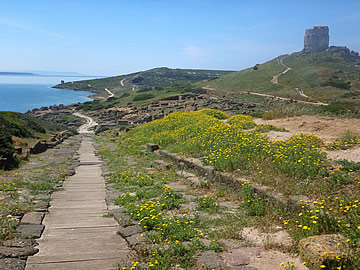
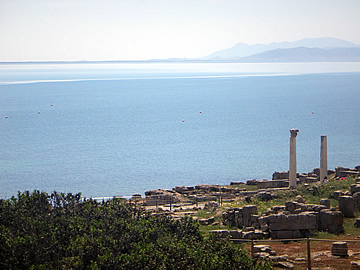
Today there is very little remaining of Tharros, the most prominent feature is two white Corinthian columns, all that is left of a 1st century B.C. Roman temple.
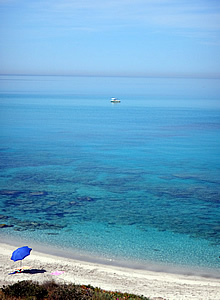
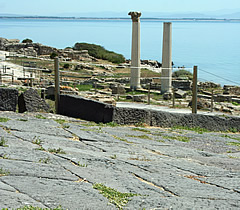
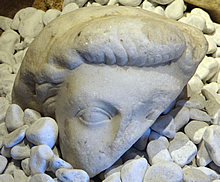
Two broad roads, the Decumanus Maximus and the Cardo Maximus, were paved with great slabs of stone and are a typical Roman town planning feature.
Tharros had all the facilities of a typical prosperous Roman city including three sets of baths, an amphitheatre and an impressive water delivery system.
It is in a lovely location, with virtually no shade, so a little uncomfortable on a blazing hot day! The waters here are absolutely beautiful - crystal clear - and it's a popular spot with locals as well as tourists.
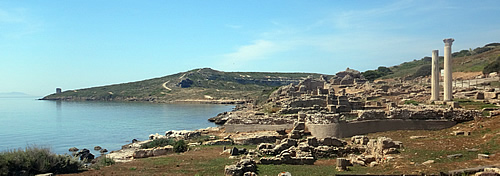
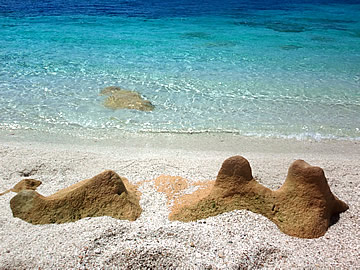
San Salvatore di Sinis, north of Tharros, is the location of the sixteenth century church of San Salvatore. The church is open for only nine days of the year between August and September when pilgrims stay in the lodgings around the church. It has the feel of a Wild West town and was used as a location in several spaghetti westerns.
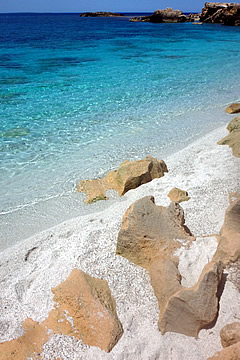
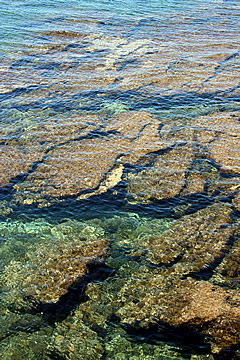
The church is also open to visitors at other odd times, we arrived too early one afternoon and spent the time a little way up the coast on a rocky shore above crystalline waters chilling out for an hour or so.
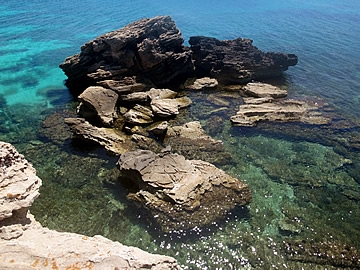
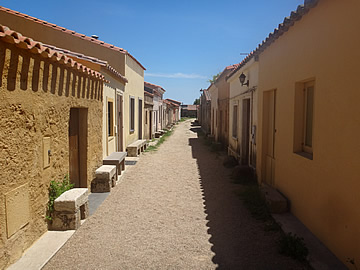
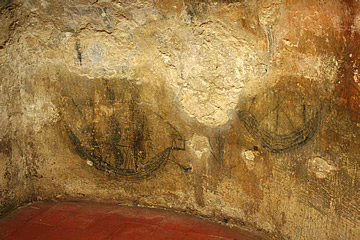
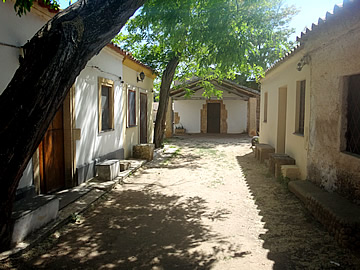
Back at the church the guide was a little late - when he finally arrived we realised he was one of the men we'd seen having an extended lunch in a nearby bar! Nice to see the relaxed way of life is still going strong.
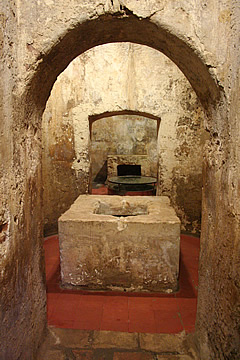
The church was built on top of an ancient pagan sanctuary, in Nuraghic times dedicated to a water cult.
Beneath the present-day church dark, damp fourth century chambers house a square sacred well and a number of faded frescoes and graffiti created over the centuries and showing a range of influences from Carthaginian to Roman, Greek and Arab.
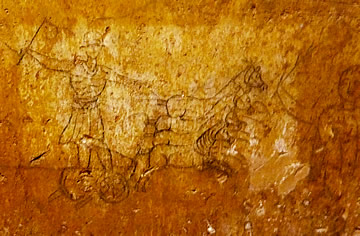
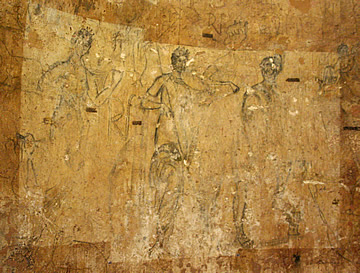
The wonder of these drawings are that they are a direct link to fairly ordinary people, giving an insight into ancient thoughts and, perhaps, aspirations.

The so-called "Tombs of the Giants" are megalithic graves usually formed from a massive stone stele acting as a facade leading to a series of chambers. In front of the stele would have been an area for offerings defined by curved lines of upright stones left and right of the stele.
Both of the tombs that we went to see are deep in the countryside. Near to the Santu Bainzu tomb are the remains of the tower of the Toscono nuraghic village.
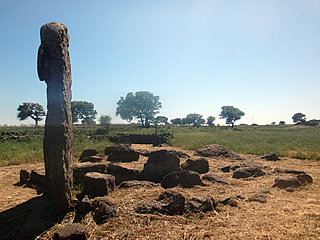
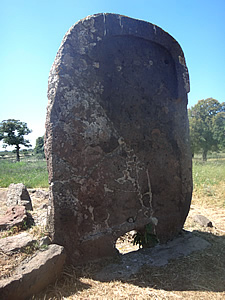
The Imbertighe tomb is in a better state of preservation, more of the stone walls embracing the area in front of the facade remain. The facade stele is in much better condition with clear delineation of the original chiselled panels on the front face.
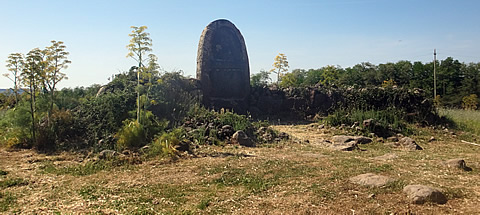
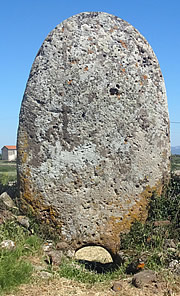
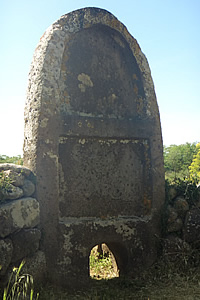
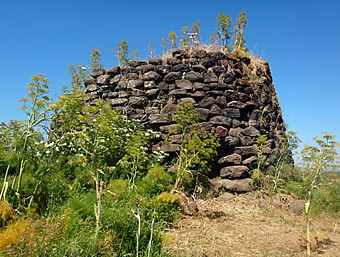
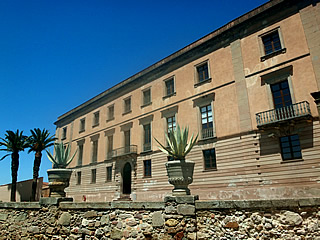
I'm fascinated by menhirs! We'd come across many in Corsica so made a special trip to Laconi to see the museum. Sadly, only a couple of dozen menhirs remain in situ in the countryside and none of these are engraved.
The museum building itself, one of the buildings which together once formed the Palazzo Aymerich, is now the civic town hall, and is easy to find on the main road through the town.
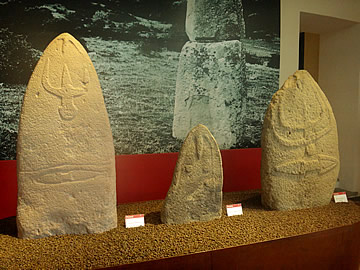
The statue-menhirs date from around 2700 to 2400 B.C., centuries before the rise of the Nuraghic civilisation.
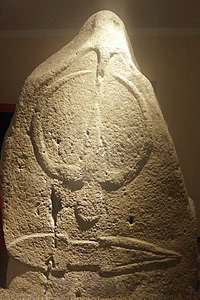
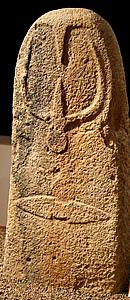
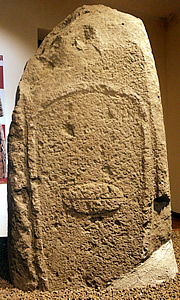
Male statue menhirs often include an engraving very similar to the "falling" or "diving god" symbols that we had come across in South America, in particular at Coba and Tulum. The information boards here interpret this a a representation of the human soul diving to the underworld.
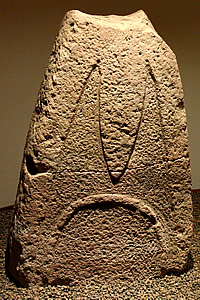
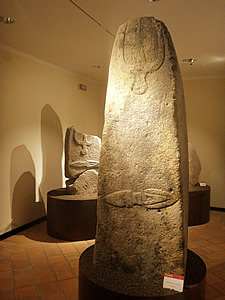
The male outnumber the female menhirs 10 to 1. The female menhirs are smaller and characterised by two small breast shapes.